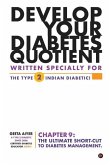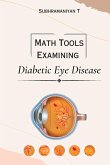Intrauterine exposure to hyperglycemia predisposes the offspring to increased risk of obesity,glucose intolerance and cardiovascular (CV) risk. A longitudinal study in the Pima Indiansshowed that offspring of diabetic mothers (ODM) have an increased risk of obesity, impairedglucose tolerance (IGT) and type 2 diabetes (T2D) demonstrable as early as 5 years of age.The SEARCH case-control study in the USA concluded that 47.2% of T2D in youth could beattributed to intrauterine exposure to maternal diabetes and obesity. These studies support the'fuel-mediated teratogenesis' concept of Pedersen and Frienkel which states that excess transplacentaltransfer of glucose, lipids and amino acids in a diabetic pregnancy results in foetalhyperglycaemia, hyperinsulinemia, and excess growth, resulting in an increased risk of obesityand diabetes.Most of the available literature is from the Western world where they have focused onchildhood, adolescence and in a few studies adulthood. The Mysore Parthenon birth cohort,specifically set up to examine the long-term effects of GDM on the offspring, is the only studyfrom India. It showed higher occurrence of CV risk markers (adiposity, higher glucose andinsulin concentrations, insulin resistance and blood pressure) in ODM during childhood andadolescence. However, they have followed only a limited number of ODM (n=45). There is aneed for larger studies in Indian population to explore the risk of hyperglycemia in offspringof Gestational Diabetes Mellitus (GDM) women and studying its contribution to the escalatingepidemic of diabetes in the young would be of great interest.With this in view, the current study was planned to investigate the prevalence of cardiometabolicrisk factors (adiposity/obesity, glucose intolerance, insulin resistance, ¿-celldysfunction, dyslipidemia, high blood pressure) in offspring of women with diabetic pregnancycompared with offspring not exposed to in utero diabetes, we also investigated the effect ofoffspring's lifestyle in the modification of cardio-metabolic risk. Our study will add to theunderstanding of intergenerational programming of diabetes and cardio-metabolic risk inchildren born in diabetic pregnancies in India, where role of maternal undernutrition is welldocumented








